Tteul Gwa Dawon (뜰과다원)
191.82510741917147m 3475 2019-11-12
6-4, Insadong 8-gil, Jongno-gu, Seoul
+82-2-734-5310
Tteul Gwa Dawon (literally "yard and tea garden") is an up-scale hanok-style tea
and coffee house where you can enjoy a tranquil garden in the center of Seoul.
The tea and coffee shop offers traditional Korean tea made of 100% natural ingredients, as well as organic coffee. It is equipped with large private rooms which can accomodate a large number of guests, making it the best place to hold seminars or other types of social gatherings.
Tea, rice cakes, and other traditional snacks served here can be a good alternative for when you're in between meals.
Insadong Geujip (인사동그집)
193.68339755081266m 28000 2020-04-24
3, Insadong 12-gil, Jongno-gu, Seoul
+82-2-737-0575
Insadong Geujip, located in the famous neighbourhood of Insadong, is a Korean fusion restaurant that is particularly well known for its traditional, yet unique interior. Along with “Insadong Seafood Rice,” and “Insadong Geujip On Rice”, diners can find a range of delicacies including Hanbang
Bossam (Herbal Napa Wraps with Pork), Savory Seafood & Spring Onion Pancake, and Kimchi Parae Pancake on the menu.
The restaurant's specialty, Geujip On Rice, a sort of Bibimbab made with a variety of seafood, vegetables and edible flowers and mixed together with rice and a red pepper paste called gochujang. The basic serving size is large enough to feed two.
The restaurant is housed in an old hanok (Korean traditional house) and has been carefully renovated to preserve the house’s traditional feel. Indoor lights wrapped with hanji, Korean traditional paper, shine a soft glow over the entire dining area and add to the overall ambience.
Banjjak Banjjak Binnaneun (반짝반짝빛나는)
205.26971801952917m 149 2021-03-19
28-1, Insadong-gil, Jongno-gu, Seoul
+82-2-738-4525
A Traditional Beverages specialty restaurant located in Insa-dong, Seoul. A store selling hand-crafted Korean traditional tea. The most famous menu is green plum tea.
Donjon Chamnamu Jangjakgui (돈존참나무장작구이)
210.28455053908445m 90 2021-03-19
8, Jong-ro9-gil, Jongno-gu, Seoul
+82-2-730-2700
A smoked BBQ restaurant. The representative menu is grilled duck. This Korean cuisine is located near Jonggak Station, Seoul.
Jonggak Hanu (종각한우)
210.28455053908445m 87 2021-03-19
8, Jong-ro 9-gil, Jongno-gu, Seoul
+82-2-733-5613
A barbecue specialty restaurant located in Jongno, Seoul. The most famous menu is assorted grilled Korean beef cuts. A restaurant that's open for group dinners.
Restaurant DAM (레스토랑담)
211.72645243608613m 136 2021-03-23
30-7 Insadong-gil Jongno-gu Seoul
+82-2-730-3624
It is a gallery-like restaurant where you can enjoy paintings by famous artists. This restaurant's signature menu is pork shoulder steak. This Western dishes restaurant is located in Jongno-gu, Seoul.
Daeseong Hanjeongsik (대성한정식)
215.51179741202634m 171 2021-03-30
10, Insadong 3-gil, Jongno-gu, Seoul
+82-2-734-4407
It is a hidden famous restaurant in Insa-dong. The best menu at this restaurant is soy sauce marinated crab set menu. This Korean table d'hote restaurant is located in Jongno-gu, Seoul.
Gaeseong Mandu Koong (개성만두 궁)
216.82215465396538m 20159 2021-03-24
11-3, Insadong 10-gil, Jongno-gu, Seoul
+82-2-733-9240
Gaeseong Mandu Koong has served Gaeseong-style mandu (dumplings) for more than 30 years. The elderly proprietor, who fled south during the Korean War runs this restaurant with the help of her granddaughters. Characterized by its delicate taste, Gaeseong mandu stuffing consists of pork and various vegetables such as Chinese cabbage and pumpkin. This restaurant's mandu is so popular that it sometimes gets sold out even before evening. Typical menu includes mandu-jeongol (hot pot) and mandu-guk (soup). The hot pot is made of various ingredients including mandu, rice cakes, mushrooms, and meat, and serves two to three persons. For several persons, it's recommended to eat bossam (boiled meat slices wrapped in lettuce leaves or kimchi) and Korean-style pancakes.
Templo Jogyesa en Seúl (조계사(서울))
219.9271960977152m 29396 2024-05-17
Ujeongguk-ro 55, Jongno-gu, Seúl
El templo Jogyesa es el núcleo del budismo zen en Corea, en él se encuentran la oficina principal de administración del budismo coreano y la sala en donde se realiza la asamblea general, entre otras instalaciones. Fue construido hacia finales del siglo XIV (época de Goryeo) en el interior del actual parque Susong, pero fue destruido (en un período indeterminado) debido a un incendio, y fue reconstruido en el año 1910. A lo largo de su historia ha tomado varios nombres, hasta que recibió la denominación de Jogyesa en el año 1954. El nombre deriva del monte Jogyesan, el cual fue el lugar en donde meditó el monje Hyeneungdaesa. Fue uno de los monjes más respetados, por lo cual sus enseñanzas y su vida han sido objeto de estudio a lo largo de la historia. En el altar del templo Jogyesa, al ser el lugar más sagrado y honrado del budismo en Corea, se llevan a cabo eventos, ceremonias y ritos durante todo el año. El edificio próximo al altar principal es la oficina general de administración del budismo coreano, es decir, es un organismo que ejerce las actividades de control y ejecución, por lo que también se efectúan gran cantidad de eventos budistas. Dentro del edificio se establecen las salas de exposiciones y la imprenta, que edita e imprime semanarios budistas. En el patio principal del templo se sitúa la pagoda de piedra de 7 pisos, construida en el año 1930. En especial, dentro de la pagoda se encuentran enterradas las cenizas de Buda, que fueron traídas en el año 1914 por un monje esrilanqués. Hacia la izquierda se encuentra instalado el campanario, que posee un gran tambor, una campana e instrumentos tradicionales de madera que se utilizan en el templo. Al otro lado del campanario está el primer centro cultural académico, construido en el año 1991, en donde se realizan seminarios, actuaciones, ceremonias de boda, conciertos musicales y exposiciones, entre otros eventos culturales.
Sadongmyeonok (사동면옥)
220.6248625960929m 17737 2021-12-17
9, Insadong, 8-gil, Jongno-gu, Seoul
+82-2-735-7393
A store with over 35 years’ experience that sells Hwanghaedo-style dumplings. The best menu at this restaurant is dumpling hot pot. This Korean dishes restaurant is located in Jongno-gu, Seoul.
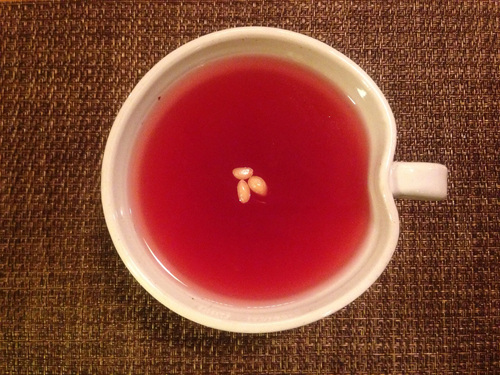
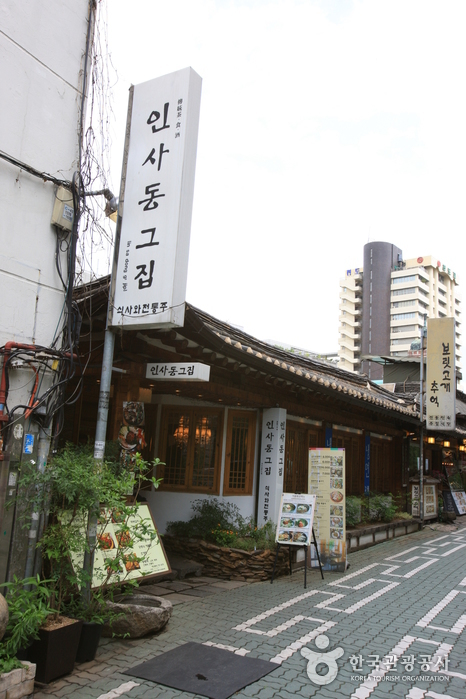
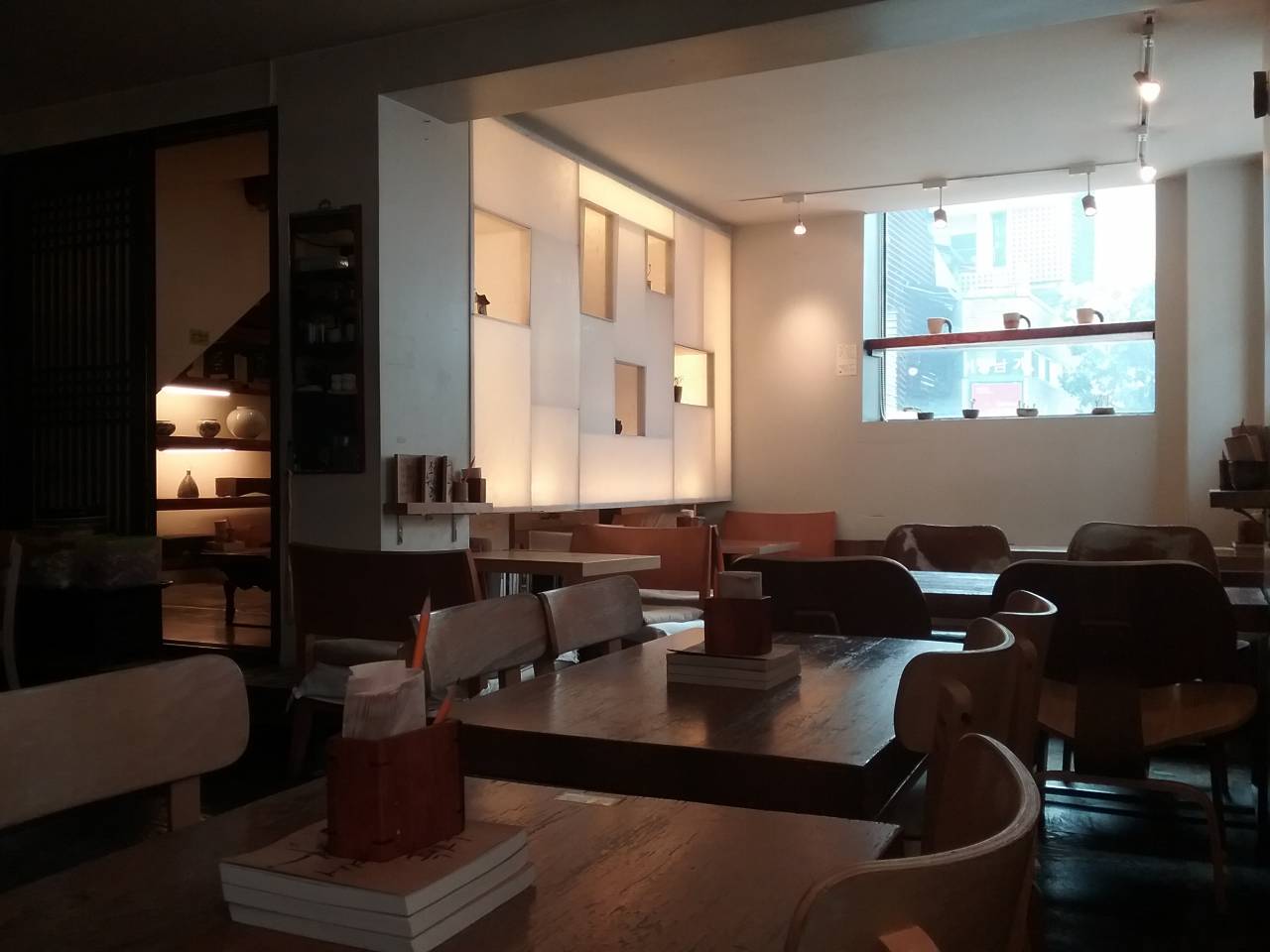
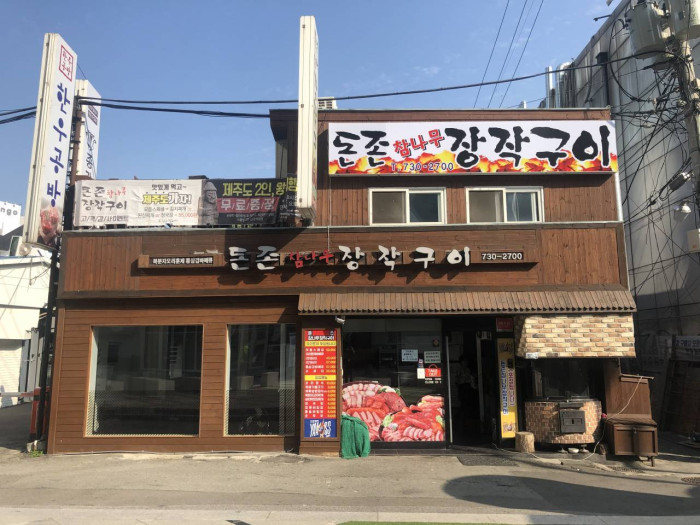
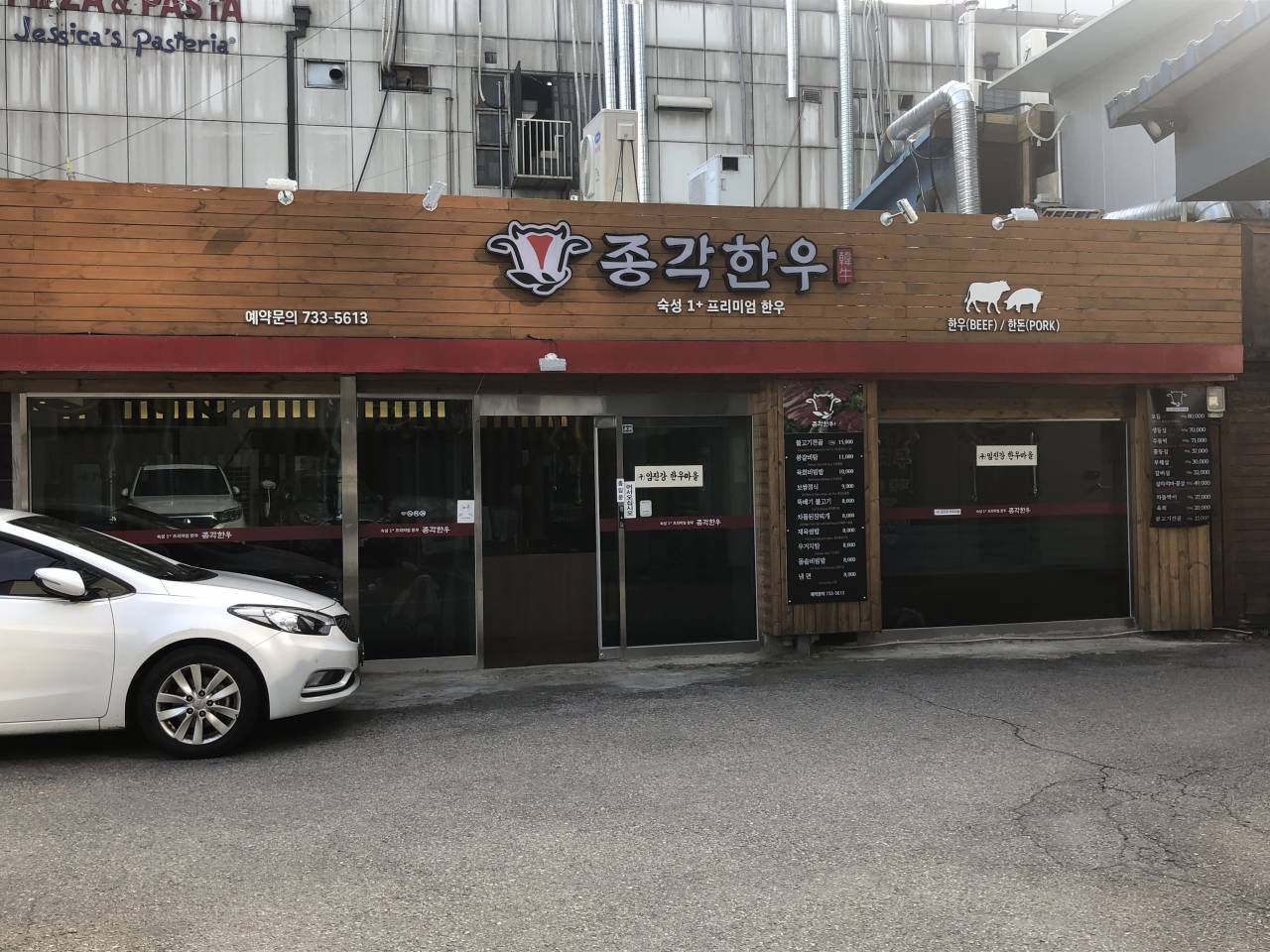
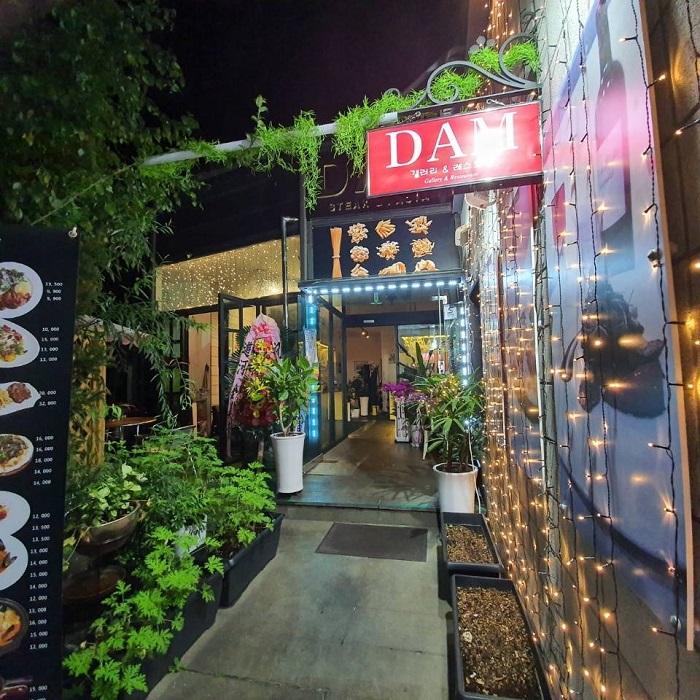
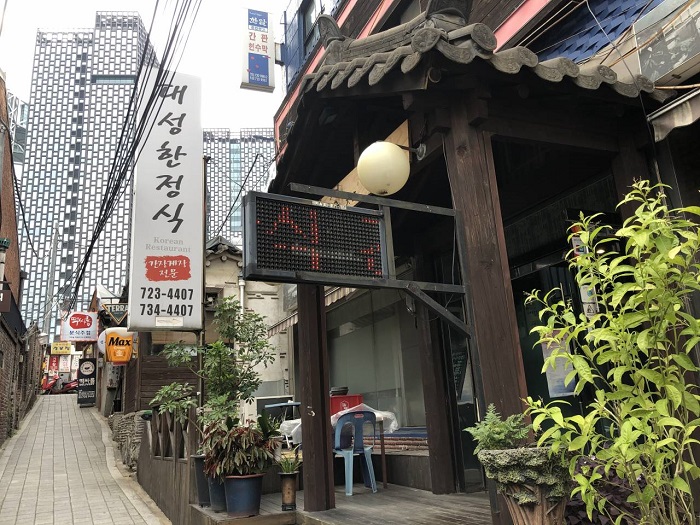
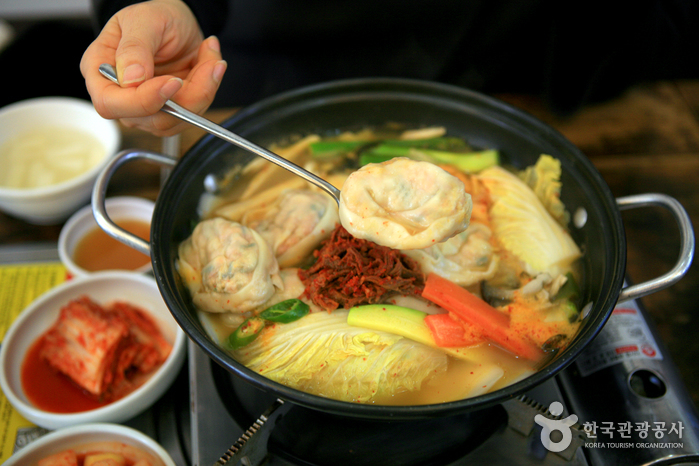

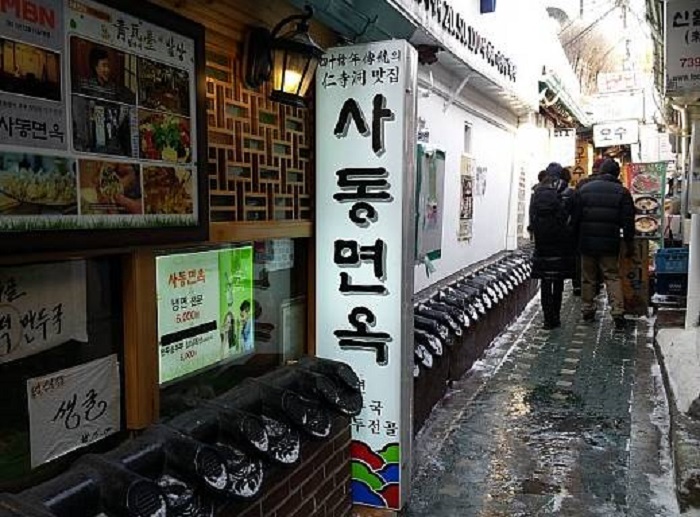
 Español
Español
 한국어
한국어 English
English 日本語
日本語 中文(简体)
中文(简体) Deutsch
Deutsch Français
Français Русский
Русский